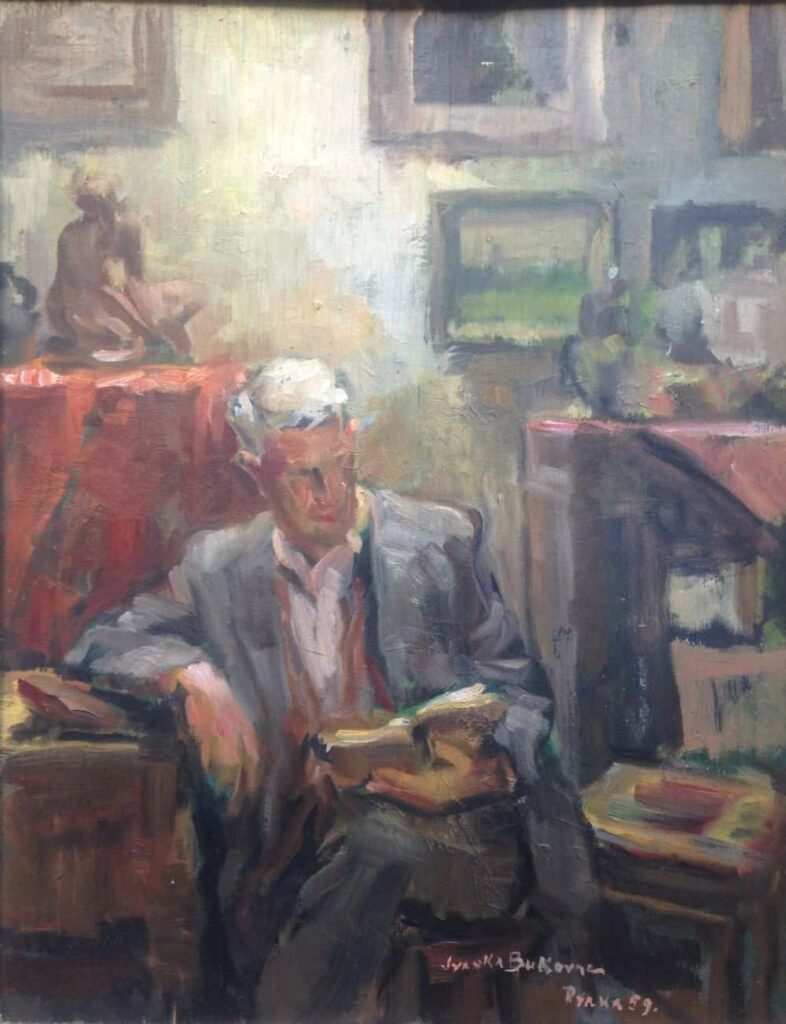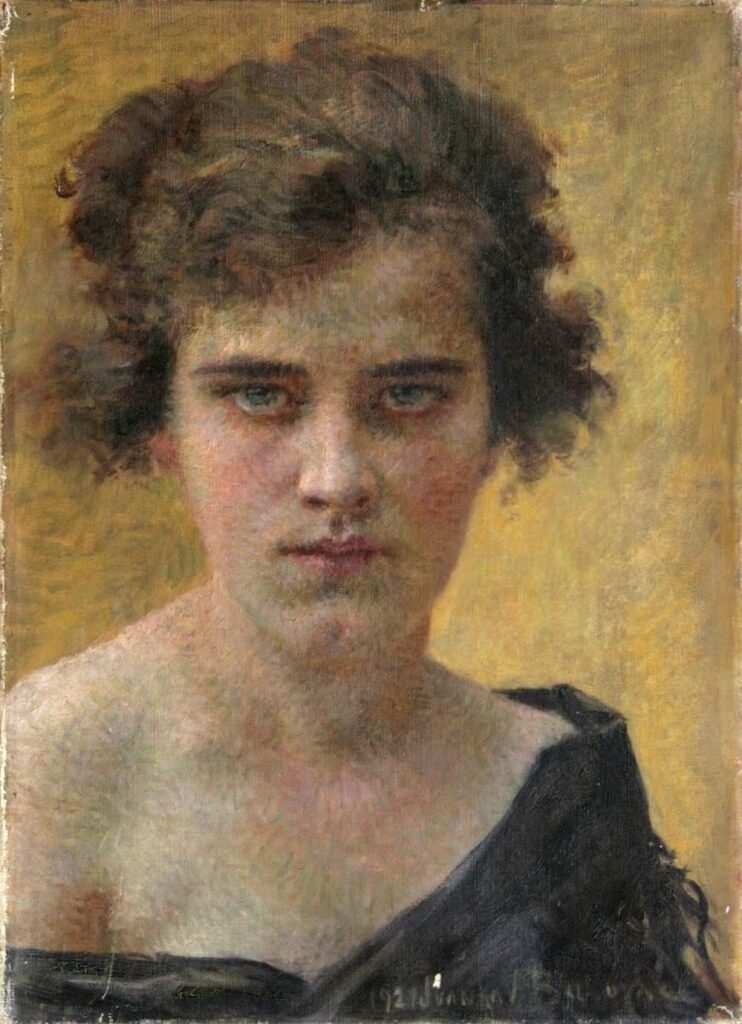The painter Mirko Rački, Bukovac’s student in Prague, wrote about the two daughters of his mentor, claiming that `they painted well and skilfully imitated their father.’One of them, Ivanka, was the youngest child of Vlaho and Jelica Bukovac; following the death of her mother, sister Jelica and brother Ago in 1968, Ivanka left Prague together with her husband Anatolij Javorsky and sister Marija and returned to her native Cavtat. Ivanka Bukovac was born on 9th July 1899 in Cavtat. However, as a three-year-old child, she and her family first moved to Vienna, spending a year there only to move to Prague, where Bukovac was given a professorship at the Academy of Fine Arts. It was in Prague that Ivanka received her education and spent almost her entire life.
Always by her father’s side, wandering around his studio, there was no other choice but to try her hand at painting.
`It was somehow perfectly normal for him that his daughters showed interest in colours since early age. He allowed us to study under his tutelage, while later I was his student at the academy, and he was glad for that. While Father was painting, he didn’t mind us hanging around him, and later we were allowed to work next to him: he would paint his model, while we stood on the side and painted the very same model,’ she saidin one of her interviews.
Sometime around 1914, Vlaho began teaching painting to the fifteen-year-old Ivanka and the seventeen-year-old Jelica in a more serious manner. Initially, they had to master drawing with a pencil and charcoal so that they could start painting using a brush. In her memoirs titled Memories of my father, Ivanka records her memories and provides valuable information on life with not only a great painter, but also a devoted father and teacher. Among other things, she wrote: `As much as our father was loving and gentle in everyday life, as soon as we started to struggle with the initial challenges in art, he was strict and did not allow us to work superficially or give up easily. In this domain, he demanded the accuracy of nature depictions and did not tolerate any mistakes, although he patiently explained to us countless times how to observe nature and how to paint.‘
Having received such lessons, in 1921 she enrolled in the Academy of Fine Arts with ease, attending the same class as her sister Jelica along with several other colleagues; she held the distinction for being among the first women to study painting academically. Her father was her teacher in the first year; after Vlaho’s sudden death in 1922 and an interruption of her studies, Ivanka graduated in 1928.
Ivanka Bukovac left behind an immense number of works. In almost every house in Cavtat there is at least one of Ivanka’s still life paintings, landscapes or portraits. The diverse choice of themes explored in her paintings is also fascinating. In addition to portraits and a large number of self-portraits, landscapes and genre scenes, it is worth noting the intimate interior scenes, which Ivanka painted over a period of almost thirty years; these paintings always depict the same space – an apartment in Prague, which contains certain details typical of her father’s paintings. The space in question is filled with furniture, paintings on the walls, carpets, draperies – in short, the aforementioned paintings are based on the principle of horror vacui. The depicted space serves to represent various scenes from family life. The recurring models are Ivanka herself and her husband Tolja, along with her sisters, mother and friends; they are shown indulging in everyday activities such as playing chess, reading books, drinking tea and having casual conversations. It is through these interior depictions that Ivanka’s painterly thought manifests itself in its truest form, not only adopting the best qualities her father’s style, but also interpreting them in her own way, thus surpassing the framework in which Rački places her and her sister, labelling them merely as skilled imitators of their father.
Having spent unforgettable childhood and early girlhood days with an extremely caring father, which had her friends often making jovial remarks about her and her siblings having two mothers rather than a mother and a father, Ivanka dedicated the rest of her life to archiving and cataloguing the vast legacy of Vlaho Bukovac. In order to do so, she returned to Cavtat from Prague and settled in the house which the Bukovac family were given as a substitute for their original family home. During an interview following Ivanka’s return, a journalist amazed by the musicality of the local dialect asked her how she managed to retain her native dialect, considering the fact that she moved away as a child to Prague, where she received her education and spent the majority of her life married to a foreigner. Ivanka replied: `We couldn’t tell you how. We simply speak the language which dad used when talking with us. You know, he cared a lot about his native language.‘
Ivanka Bukovac passed away in Cavtat on 14th November 1978, working to the very end on archiving and preserving the memory of not only her father, Vlaho Bukovac, but also of the rest of her family.




